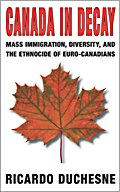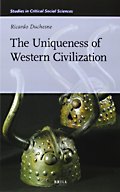Don’t Apologize To The Sikhs—Part 1
Prime Minister Trudeau has recently announced that on May 18 he will make an apology in Parliament to Sikhs. Most of the 376 Sikhs aboard a ship called the Komagata Maru were denied entry to Canada in 1914. According to aggressive Sikhs, Canada had no justification for doing this. Undoubtedly, a number of other Sikhs are cringing at Trudeau’s announcement because they believe that the incident was much more complicated than the picture a group of Sikhs claim it was. They also think the Sikhs have already received an apology and that endless, aggressive Sikh demands are alienating most Canadians.
Most Canadians, including our Prime Minister, know little about the Komagata Maru issue. We offer the following facts to inform Mr. Trudeau and other Canadians of the historical record in 1914 and of numerous other shameless recent Sikh actions.
(1) Gurdit Singh, the leader of the Komagata Maru voyage, had successfully challenged British authorities in a Singapore court on an unrelated matter. His victory gave him confidence that he could get Canada to accept his 376 passengers. In fact, he boasted to authorities that after landing his 376 mostly Sikh passengers, he would take another 25,000 to Canada. In 1914, Vancouver had a population between 60,000 and 70,000. Twenty-five thousand additional Sikhs would have significantly diluted the European-based population, added to the ongoing conflict over low-wage Asian workers and inflamed concern that B.C.’s population could be overwhelmed by large numbers of Asians. Many crude Sikhs like to suggest that Canada had no right to defend its B.C. population and workers from being culturally and economically overwhelmed by Asians. Ironically, B.C. resentment was very similar to the resentment that the Chinese and East Indians felt towards European colonizers in their countries at the same time. If Chinese and East Indians were justified in resisting colonization, so were Canadians who faced a similar danger from huge numbers of Chinese and East Indians.
(2) The Komagata Maru incident was preceded by the Panama Maru incident of October 17, 1913. That evemt helps to explain much of what happened in the Komagata Maru incident 7 months later. The Panama Maru had carried 56 East Indians to Canada. Most of the passengers had not lived in Canada previously, but falsely claimed that they had. They produced fake money order receipts, time cards, etc. to substantiate their claims. Immigration authorities allowed 17 (those physically recognized to have been here before) to land, but they detained 39 of the 56. A Board of Inquiry looked into the case and ordered that the 39 be deported, but litigious East Indians in Canada determined to make the Panama Maru case a test case. Their lawyer J.Edward Bird appeared before Justice Dennis Murphy, the author of a Royal Commission which had investigated Chinese Immigration Fraud. He ruled against the East Indians. Bird then went to Chief Justice Gordon Hunter, who was notorious for appearing drunk in court and who was a clear embarrassment to the government. He allowed the 39 to stay. Even 4 of the 39 who had been ordered deported for medical reasons, escaped from detention and could not be found. Canadian immigration authorities became determined not to let these people humiliate them again.
(3) The crude members of the Sikhs claim that the Sikhs aboard the Komagata Maru were unjustly treated. The reality is that the Sikhs were merely one part of an ongoing battle that the Vancouver / Southern British Columbia population had already been involved in with low-wage Japanese and Chinese. When the federal government introduced a $500 Head Tax on the Chinese in 1905 to protect Canadians, the number of Chinese passengers on the Canadian Pacific (CP) Steamships fell substantially. To end the drop in CP passenger traffic, CP aggressively advertised tickets in India in order to get East Indians like the Sikhs to travel. In 1907, 901 East Indians arrived, doubling B.C. ‘s East Indian population. In the first 10 months of 1907, a total of about 11,500 East Indians, Japanese and Chinese arrived—an overwhelming number compared to other years. Most of this number were Japanese who had violated Japanese law by not getting Japanese government permission to travel to Canada from Hawaii (where they were working as farm labourers). Half of Vancouver’s population, more than 30,000 paraded through Vancouver streets on Labour Day, in September, 1907 to protest the arrival of these people. This was as clear a sign of solidarity as they could give to Ottawa which had repeatedly dragged its feet in response to B.C. complaints about immigration. Many of the 11,500 migrants were illegals or unneeded labourers who were imported to displace Canadian workers. The Vancouver Riot of 1907 followed the parade.
(4) The Sikhs and the immigration lobby have completely distorted the Komagata Maru incident, the 1907 Vancouver Riot and all of the events before it. The crude propagandists among the Sikhs like to cite Ottawa’s “Continuous Passage” law (a requirement that a ship carrying Sikhs leave from India, not from Hong Kong as the Komagata Maru did) as an example of persecution directed at Sikhs. They conveniently omit the point that the law was primarily intended to stop illegal Japanese labourers from leaving Hawaii and causing unnecessary job competition in B.C. The law was later applied to East Indians for the same reason.
The Vancouver Parade / Riot of 1907 and the Komagata Maru incident should be remembered in our media and school textbooks as events in which Vancouver residents actually defended themselves against unnecessary and overwhelming immigration. Vancouver residents have to revive the Spirit of 1907 !!
++++++++++++++++++++++++++++++++++++++++++++++++++++




